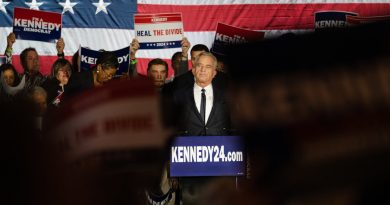Pandemic Aid Programs Spur a Record Drop in Poverty
The most comprehensive study yet of the federal response to the pandemic shows huge but temporary benefits for the poor — and helps frame a larger debate over the role of government.
Kathryn Goodwin, 29, celebrating the third birthday of her daughter Vivian this week in St. Peters, Mo. A single mother of five, Ms. Goodwin said her income rose almost 30 percent last year, despite losing her job.Credit…Sarahbeth Maney/The New York Times
Supported by
By Jason DeParle
WASHINGTON — The huge increase in government aid prompted by the coronavirus pandemic will cut poverty nearly in half this year from prepandemic levels and push the share of Americans in poverty to the lowest level on record, according to the most comprehensive analysis yet of a vast but temporary expansion of the safety net.
The number of poor Americans is expected to fall by nearly 20 million from 2018 levels, a decline of almost 45 percent. The country has never cut poverty so much in such a short period of time, and the development is especially notable since it defies economic headwinds — the economy has nearly seven million fewer jobs than it did before the pandemic.
The extraordinary reduction in poverty has come at extraordinary cost, with annual spending on major programs projected to rise fourfold to more than $1 trillion. Yet without further expensive new measures, millions of families may find the escape from poverty brief. The three programs that cut poverty most — stimulus checks, increased food stamps and expanded unemployment insurance — have ended or are scheduled to soon revert to their prepandemic size.
While poverty has fallen most among children, its retreat is remarkably broad: It has dropped among Americans who are white, Black, Latino and Asian, and among Americans of every age group and residents of every state.
Poverty Rates Have Fallen for Every Demographic Group
Source: Read Full Article



